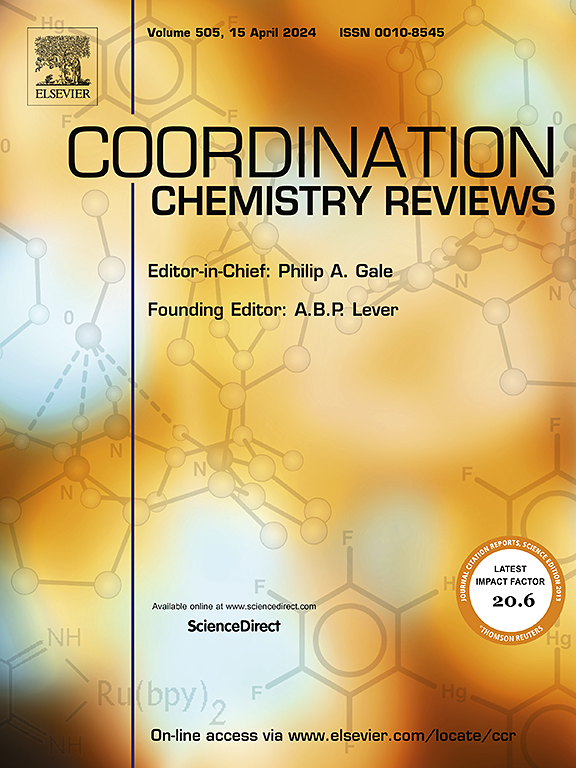Emerging metal−organic framework-based materials for photocatalytic and electrocatalytic NH3 synthesis: Design principles, structure-activity correlation, and mechanistic insights
IF 20.3
1区 化学
Q1 CHEMISTRY, INORGANIC & NUCLEAR
引用次数: 0
Abstract
Sustainable ammonia (NH3) synthesis through artificial nitrogen fixation has gained significant attention as a promising alternative to the energy-intensive Haber-Bosch process, offering a greener pathway for NH3 production. In particular, to optimize the economic sustainability pathway of NH3 synthesis technology, it is paramount to engineer novel catalysts. Emerging MOFs are a type of lightweight porous network materials with tunable channels, high surface areas, and designable components, which offer intriguing functionalities in photo- and electro-driven N2 reduction reaction (NRR) by lowering reaction potentials and accelerating reaction rates. Although some progress has been achieved in this area, fundamental issues remain to be addressed to better understand the relationship between the structures, properties, catalytic activity, and potential applications of MOF-based catalysts. Herein, based on the comprehensive design concept, the latest advancements in MOF-based material design principle, structural modulation mechanism, and reaction engineering are systematically summarized to elucidate the structure-activity correlations in NRR. It begins with the MOF-based material design principles, which encompass synthesis strategies, material properties, and the transition from laboratory to large-scale continuous production progress. Following that, in terms of structural modulation mechanism, particular emphasis is placed on the analysis of crystal structure, atomic configuration, and electronic properties, aiming to gain a deeper understanding of the transport and reaction processes of charge carriers. Furthermore, the structure-activity correlations and reaction engineering are elaborated for NRR. Finally, a comprehensive analysis of the prospects and challenges associated with MOF-based catalysts in NRR is presented, along with detailed solutions.

求助全文
约1分钟内获得全文
求助全文
来源期刊

Coordination Chemistry Reviews
化学-无机化学与核化学
CiteScore
34.30
自引率
5.30%
发文量
457
审稿时长
54 days
期刊介绍:
Coordination Chemistry Reviews offers rapid publication of review articles on current and significant topics in coordination chemistry, encompassing organometallic, supramolecular, theoretical, and bioinorganic chemistry. It also covers catalysis, materials chemistry, and metal-organic frameworks from a coordination chemistry perspective. Reviews summarize recent developments or discuss specific techniques, welcoming contributions from both established and emerging researchers.
The journal releases special issues on timely subjects, including those featuring contributions from specific regions or conferences. Occasional full-length book articles are also featured. Additionally, special volumes cover annual reviews of main group chemistry, transition metal group chemistry, and organometallic chemistry. These comprehensive reviews are vital resources for those engaged in coordination chemistry, further establishing Coordination Chemistry Reviews as a hub for insightful surveys in inorganic and physical inorganic chemistry.
 求助内容:
求助内容: 应助结果提醒方式:
应助结果提醒方式:


